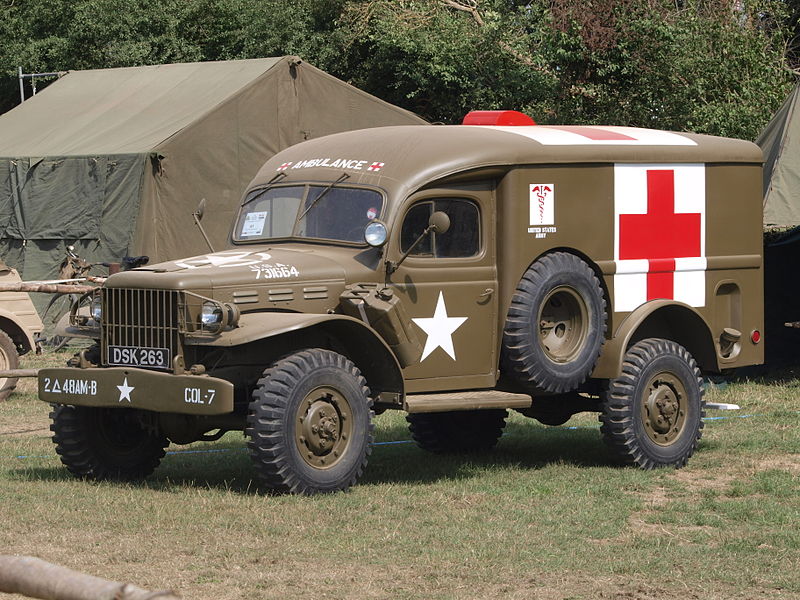Hello ladies and gents this is the viking telling you that today we are talking about

Dodge WC54

The Dodge WC-54, Ambulance, 3⁄4-ton, 4 x 4, (SNL supply catalog designation G-502), was a variant of the Dodge WC series light 4×4 trucks, developed during World War II. Built from 1942 to 1945, they served as the U.S. Army's main ambulance, with some used as late as 1953 during the Korean War by the U.S. Army Medical Corps, and others serving as late as the 1960s in the armies of some European countries.
The WC-54 was designed to replace the earlier 1/2-ton, 4×4, G-505 models WC-9, WC-18, and WC-27 Dodge Ambulance trucks.Although based on the 3/4-ton Dodge "Beep" chassis, which front and rear axles featured wider tracks of 64 3⁄4 in (1.64 m), the 3/4-ton ambulance versions retained a longer wheelbase, close to that of the previous half-tonners, as well as adjusted suspension to make their ride softer.
The closed sheet-metal body was made by Wayne Body works. It had room for a driver and four to seven patients plus a medic. If the fold-away bunk stretchers were used, four patients could be transported lying down. Because of its intended role, the WC-54 featured a large matrix cab heater fitted on the firewall, providing comfort for patients and crew. It was fitted with a foldaway step to its rear to allow easier access for stretcher bearers and injured personnel. Early models featured a stuck out fuel filler cap which was changed to a recessed one in the later model, a modification that was retrofitted to some early model trucks.
From 1942 to 1945, total production of the 3/4-ton Dodge WC-series was some 250,000. Of these, 29,502 were ambulances — 26,002 WC-54 and 3,500 WC-64 KD models.The vehicles were supplied under US government contracts W398-QM-11420 (850 examples), W398-QM-11422 (9945 examples), DAW398-QM-448 (16 examples), W398-QM-13596 (410 examples) and W374-ORD-2864 (11,636 examples)
Virtually unchanged for three years, apart from minor technical tweaks, it was replaced by a knock-down body version, the WC-64 KD. Based on essentially the same chassis as the WC-54, the rear ambulance boxes were split in two major parts: lower and upper, designed to increase the number of vehicles that could be shipped at the same time.
The lower part of the ambulance body was attached to the chassis at the factory, while the upper box was crated for installation in the field. Only produced in 1945, just 3,500 of these were made before the war ended.The "knocked-down" condition was so much more space-efficient, that two ambulances could now be stacked, and shipped in the same space that would previously hold only one conventional WC-54 ambulance. Additionally, the reduced size also allowed air transportation of the vehicle
I hope you liked this post and as always have a chilled day from the Viking.
Comments
Post a Comment